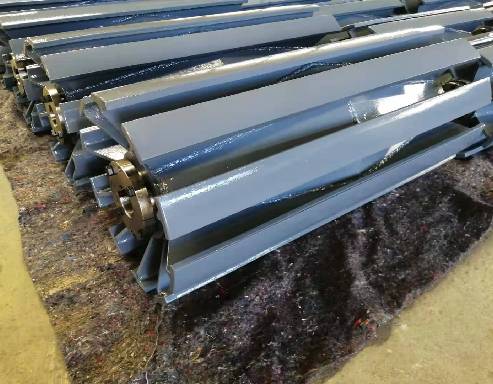 Afrikaans
Afrikaans  Albanian
Albanian  Amharic
Amharic  Arabic
Arabic  Armenian
Armenian  Azerbaijani
Azerbaijani  Basque
Basque  Belarusian
Belarusian  Bengali
Bengali  Bosnian
Bosnian  Bulgarian
Bulgarian  Catalan
Catalan  Cebuano
Cebuano  Corsican
Corsican  Croatian
Croatian  Czech
Czech  Danish
Danish  Dutch
Dutch  English
English  Esperanto
Esperanto  Estonian
Estonian  Finnish
Finnish  French
French  Frisian
Frisian  Galician
Galician  Georgian
Georgian  German
German  Greek
Greek  Gujarati
Gujarati  Haitian Creole
Haitian Creole  hausa
hausa  hawaiian
hawaiian  Hebrew
Hebrew  Hindi
Hindi  Miao
Miao  Hungarian
Hungarian  Icelandic
Icelandic  igbo
igbo  Indonesian
Indonesian  irish
irish  Italian
Italian  Japanese
Japanese  Javanese
Javanese  Kannada
Kannada  kazakh
kazakh  Khmer
Khmer  Rwandese
Rwandese  Korean
Korean  Kurdish
Kurdish  Kyrgyz
Kyrgyz  Lao
Lao  Latin
Latin  Latvian
Latvian  Lithuanian
Lithuanian  Luxembourgish
Luxembourgish  Macedonian
Macedonian  Malgashi
Malgashi  Malay
Malay  Malayalam
Malayalam  Maltese
Maltese  Maori
Maori  Marathi
Marathi  Mongolian
Mongolian  Myanmar
Myanmar  Nepali
Nepali  Norwegian
Norwegian  Norwegian
Norwegian  Occitan
Occitan  Pashto
Pashto  Persian
Persian  Polish
Polish  Portuguese
Portuguese  Punjabi
Punjabi  Romanian
Romanian  Russian
Russian  Samoan
Samoan  Scottish Gaelic
Scottish Gaelic  Serbian
Serbian  Sesotho
Sesotho  Shona
Shona  Sindhi
Sindhi  Sinhala
Sinhala  Slovak
Slovak  Slovenian
Slovenian  Somali
Somali  Spanish
Spanish  Sundanese
Sundanese  Swahili
Swahili  Swedish
Swedish  Tagalog
Tagalog  Tajik
Tajik  Tamil
Tamil  Tatar
Tatar  Telugu
Telugu  Thai
Thai  Turkish
Turkish  Turkmen
Turkmen  Ukrainian
Ukrainian  Urdu
Urdu  Uighur
Uighur  Uzbek
Uzbek  Vietnamese
Vietnamese  Welsh
Welsh  Bantu
Bantu  Yiddish
Yiddish  Yoruba
Yoruba  Zulu
Zulu Guide Rollers for Optimal Conveyor Belt Performance and Efficiency
Understanding Conveyor Belt Guide Rollers
Conveyor belt systems are integral to industries ranging from manufacturing to logistics. They streamline the movement of materials, enhancing efficiency and productivity. However, the smooth operation of these conveyor systems relies heavily on various components, one of which is the guide roller.
What Are Conveyor Belt Guide Rollers?
Guide rollers are cylindrical devices that help maintain the alignment and stability of a conveyor belt as it moves. They are positioned on both sides of the belt to prevent it from drifting off track. Properly functioning guide rollers ensure the conveyor belt runs smoothly and minimizes wear and tear, which can be costly for companies relying on these systems.
Importance of Guide Rollers
The primary purpose of guide rollers is to align the conveyor belt and prevent slippage. If a belt veers off course, it can cause significant operational disruptions, leading to material loss and increased maintenance costs. By keeping the belt stationary, guide rollers enhance efficiency and operational reliability.
Moreover, guide rollers help distribute the weight of the materials being transported. This distribution is essential for preventing excessive stress on the belt and the conveyor system as a whole. A well-aligned belt provides better support for heavy loads, reducing the likelihood of mechanical failures.
Materials and Designs
Guide rollers can be constructed from various materials, including rubber, plastic, and metal. The choice of material often depends on the application, load, and environmental conditions. For instance, rubber rollers are commonly used for lighter loads and in environments where noise reduction is crucial. In contrast, metal rollers are preferred for heavy-duty applications due to their durability and strength.
The design of guide rollers can also vary. Some may have a tapered shape to help guide the belt more effectively, while others come with special coatings or textures that enhance grip and reduce slippage. The right design ensures that the guide rollers perform optimally under varying conditions.
conveyor belt guide rollers

Maintenance Tips
To ensure the longevity and performance of guide rollers, regular maintenance is vital
. Here are some tips1. Regular Inspection Check guide rollers for signs of wear, misalignment, or damage. Early detection of issues can prevent more significant problems down the line.
2. Cleanliness Keep the rollers clean and free from debris. Accumulated dirt can affect the functionality of the roller, leading to potential malfunctions.
3. Lubrication Depending on the design, some guide rollers require lubrication to function efficiently. Regularly apply lubricant to moving parts to reduce friction and wear.
4. Alignment Checks Ensure that guide rollers are correctly aligned. Misaligned rollers can cause the belt to drift off, leading to increased wear.
5. Replacing Worn Components When guide rollers show signs of significant wear or damage, replacing them promptly can prevent larger issues that may impact the entire conveyor system.
Conclusion
Conveyor belt guide rollers are a critical component in ensuring the efficient operation of conveyor systems. By providing alignment and stability, they help prevent slippage and wear, contributing to overall productivity. Understanding their importance, maintaining them properly, and choosing the right materials and designs can significantly enhance the effectiveness of any conveyor system. In today’s fast-paced industrial environment, investing in high-quality guide rollers is not just beneficial; it’s essential for maximizing operational efficiency.
-
Revolutionizing Conveyor Reliability with Advanced Rubber Lagging PulleysNewsJul.22,2025
-
Powering Precision and Durability with Expert Manufacturers of Conveyor ComponentsNewsJul.22,2025
-
Optimizing Conveyor Systems with Advanced Conveyor AccessoriesNewsJul.22,2025
-
Maximize Conveyor Efficiency with Quality Conveyor Idler PulleysNewsJul.22,2025
-
Future-Proof Your Conveyor System with High-Performance Polyurethane RollerNewsJul.22,2025
-
Driving Efficiency Forward with Quality Idlers and RollersNewsJul.22,2025





























